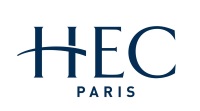No 1514: Paying for Privacy: Pay-or-Tracking Walls
Timo Müller-Tribbensee (), Klaus M. Miller () and Bernd Skiera ()
Additional contact information
Timo Müller-Tribbensee: Goethe University Frankfurt
Klaus M. Miller: HEC Paris
Bernd Skiera: Goethe University Frankfurt
Abstract: Prestigious news publishers, and more recently, Meta, have begun to request that users pay for privacy. Specifically, users receive a notification banner, referred to as a pay-or-tracking wall, that requires them to (i) pay money to avoid being tracked or (ii) consent to being tracked. These walls have invited concerns that privacy might become a luxury. However, little is known about pay-or-tracking walls, which prevents a meaningful discussion about their appropriateness. This paper conducts several empirical studies and finds that top EU publishers use pay-or-tracking walls. Their implementations involve various approaches, including bundling the pay option with advertising-free access or additional content. The price for not being tracked exceeds the advertising revenue that publishers generate from a user who consents to being tracked. Notably, publishers’ traffic does not decline when implementing a pay-or-tracking wall and most users consent to being tracked; only a few users pay. In short, pay-or-tracking walls seem to provide the means for expanding the practice of tracking. Publishers profit from pay-or-tracking walls and may observe a revenue increase of 16.4% due to tracking more users than under a cookie consent banner.
Keywords: rivacy; tracking; consent; behavioral targeting; online advertising
JEL-codes: D12; D83; L86; M31; M38
58 pages, April 4, 2024
Full text files
papers.cfm?abstract_id=4749217 HTML file Full text
Questions (including download problems) about the papers in this series should be directed to Antoine Haldemann ()
Report other problems with accessing this service to Sune Karlsson ().
RePEc:ebg:heccah:1514This page generated on 2025-06-10 11:14:56.

